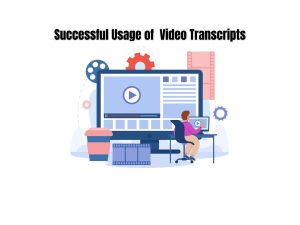
Case Studies: Successful Usage of Video Scripts
In the digital age, video content has become an integral part of online communication strategies for businesses and organizations across various industries. While videos are
Follow-up strategies are an integral part of the sales process. However, time and time again, businesses fail to realize the full potential of well-structured, effective follow-ups. In this blog, we will explore some case studies illustrating successful follow-up strategies and how they have positively impacted sales conversion.
Businesses that consistently and effectively manage follow-ups certainly have an edge over their competitors, as such strategies help maintain communication, build relationships, and eventually boost sales conversions. According to InsideSales.com, 50% of sales happen after the 5th follow-up, yet many businesses give up after one or two attempts. This fact alone amplifies the significance of crafting meticulous follow-up strategies.
One of the best examples of a potent follow-up strategy can be seen from Google’s customer service model. Google, despite its immense size, manages to approach every customer query with valued attention, timeliness, and appropriate follow-ups.
This is particularly noticeable with their ad management platform, Google Ads. Google employs a dedicated team that reaches out to customers regarding their advertising experience, offering assistance even before customers realize they need it. They follow up with emails, phone calls, and assistive resources, before and after ad campaign launches, ensuring customers are guided through the entire process and beyond.
This preemptive approach results in a significant increase in customer satisfaction and retention, impacting product usage and, eventually, sales conversions.
Zappos, an online shoe and clothing retailer, is well-known for its exceptional customer service. The follow-up strategy is particularly interesting due to Zappos’ “Personal Emotional Connection” tactic.
As part of this tactic, each customer query is not just answered and then closed, but it also includes a personalized follow-up message aimed at creating emotional engagement. This follow-up often includes empathetic and supportive messages, along with additional help or suggestions tailored personally for the customer. Zappos’ personalized follow-up strategy has led to an incredibly loyal customer base, repeat purchases, and higher sales conversion rates.
HubSpot, the widely recognized inbound marketing, sales, and service software, employs a multi-channel follow-up strategy focused on nurturing leads and customers through every stage of the sales funnel. They utilize an optimal mix of email, phone calls, educational resources, and even social media interactions for their follow-ups.
HubSpot’s approach ensures contextually relevant and timely engagement. Customers on HubSpot often receive follow-up emails that direct to a helpful blog, an insightful webinar, or an actionable ebook, contributing to continually educating and nurturing them. This constant flow of valuable follow-ups helps HubSpot maintain high engagement levels, leading to increased sales conversions.
Effectively weaving follow-up strategies into your sales process can significantly improve communication, nurture relationships, and enhance customer loyalty, all attributing to an increased sales conversion rate.
The key takeaway here is to approach your follow-ups methodically, personalize your communication, and consistently deliver value to your customers and prospects. It’s not about being pushy; it’s about being there as a supportive guide. Great follow-ups are the foundations of great customer relationships, and these relationships are what drive sales and business growth.

In the digital age, video content has become an integral part of online communication strategies for businesses and organizations across various industries. While videos are

Duplicate content refers to identical or similar content that appears on multiple URLs within a website or across different websites. While duplicate content is common





“LeadsView did an excellent job with my project and will definitely recommend. Easy to work with, flexible and good quality of work. I am more than happy to recommend them."




















Copyright 2023 © LeadsView. All Rights Reserved
